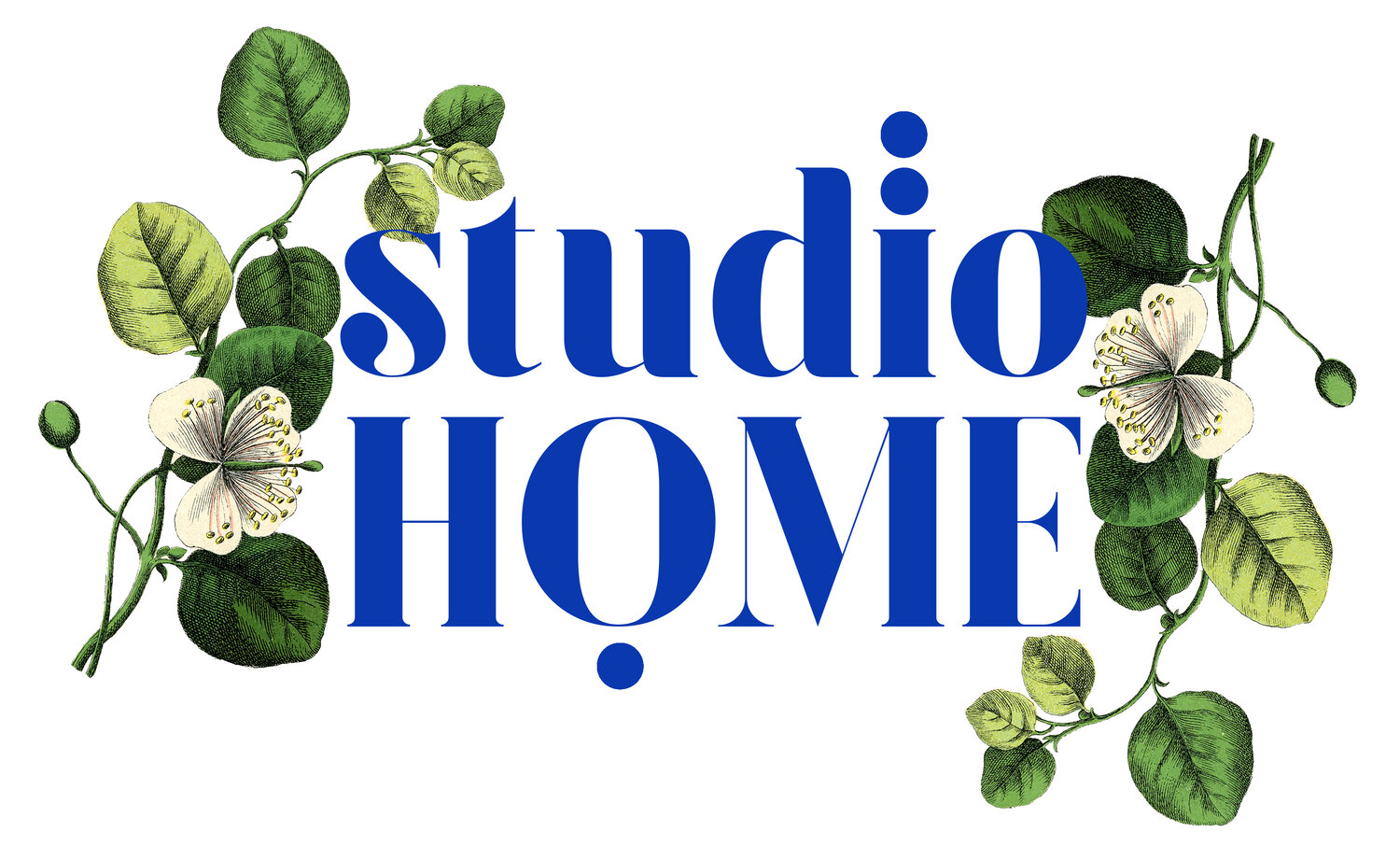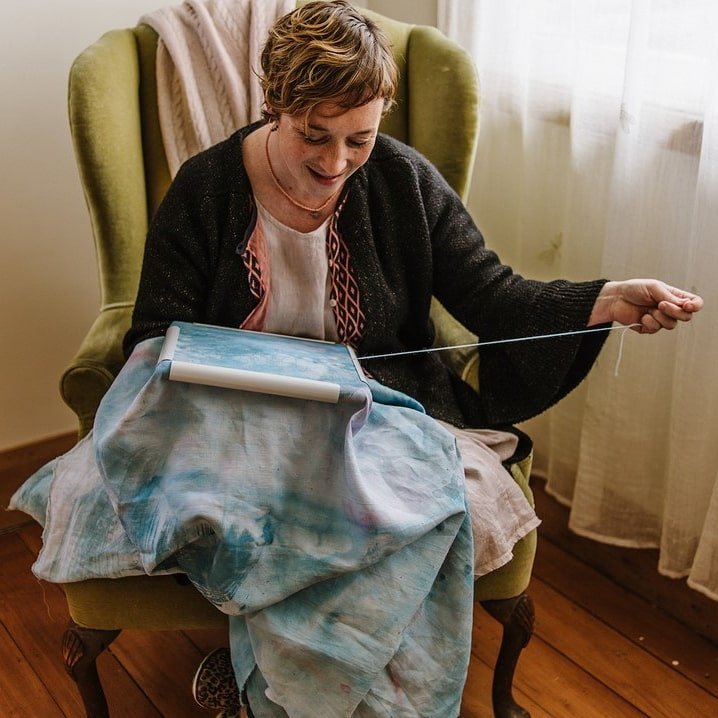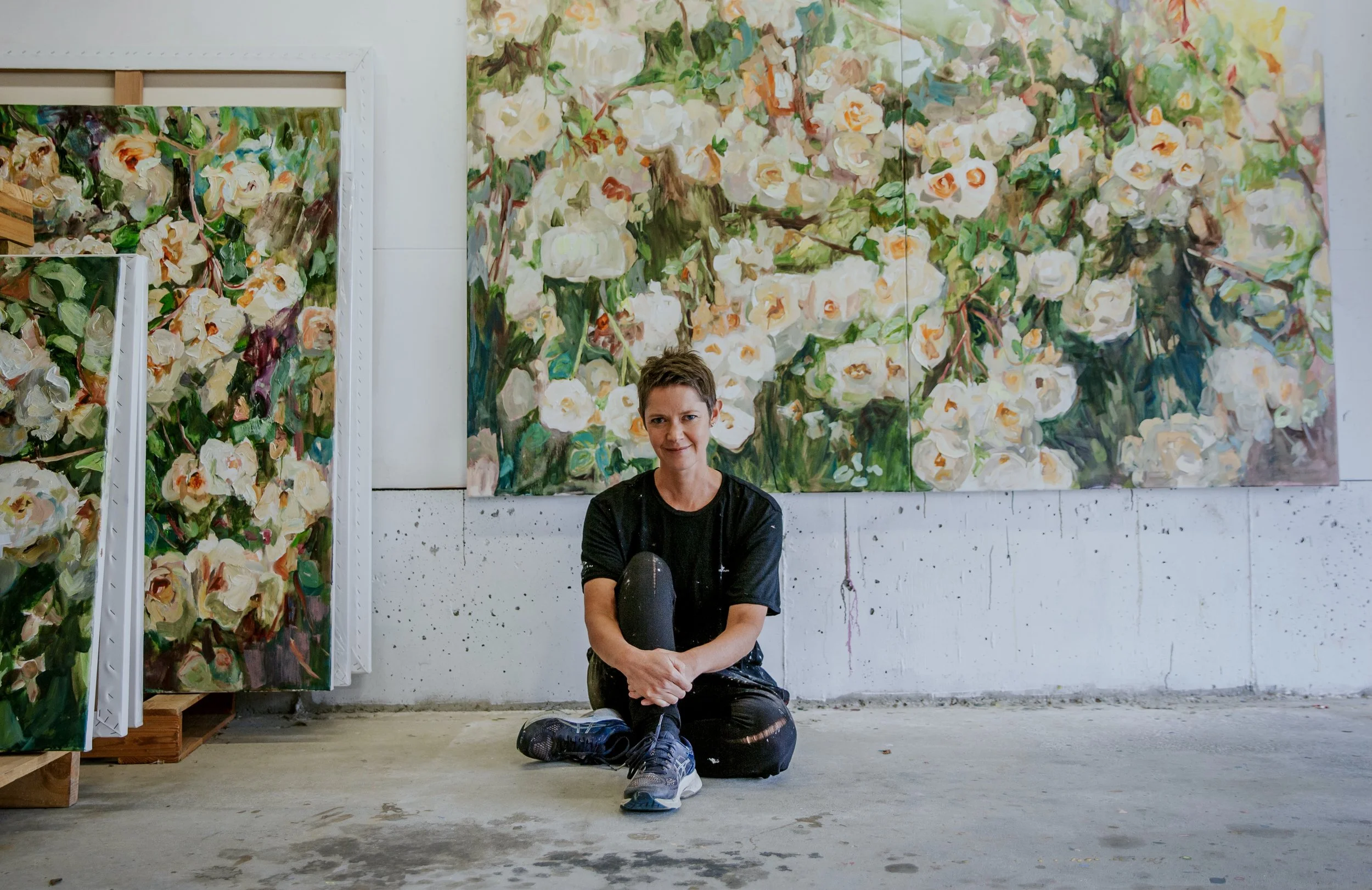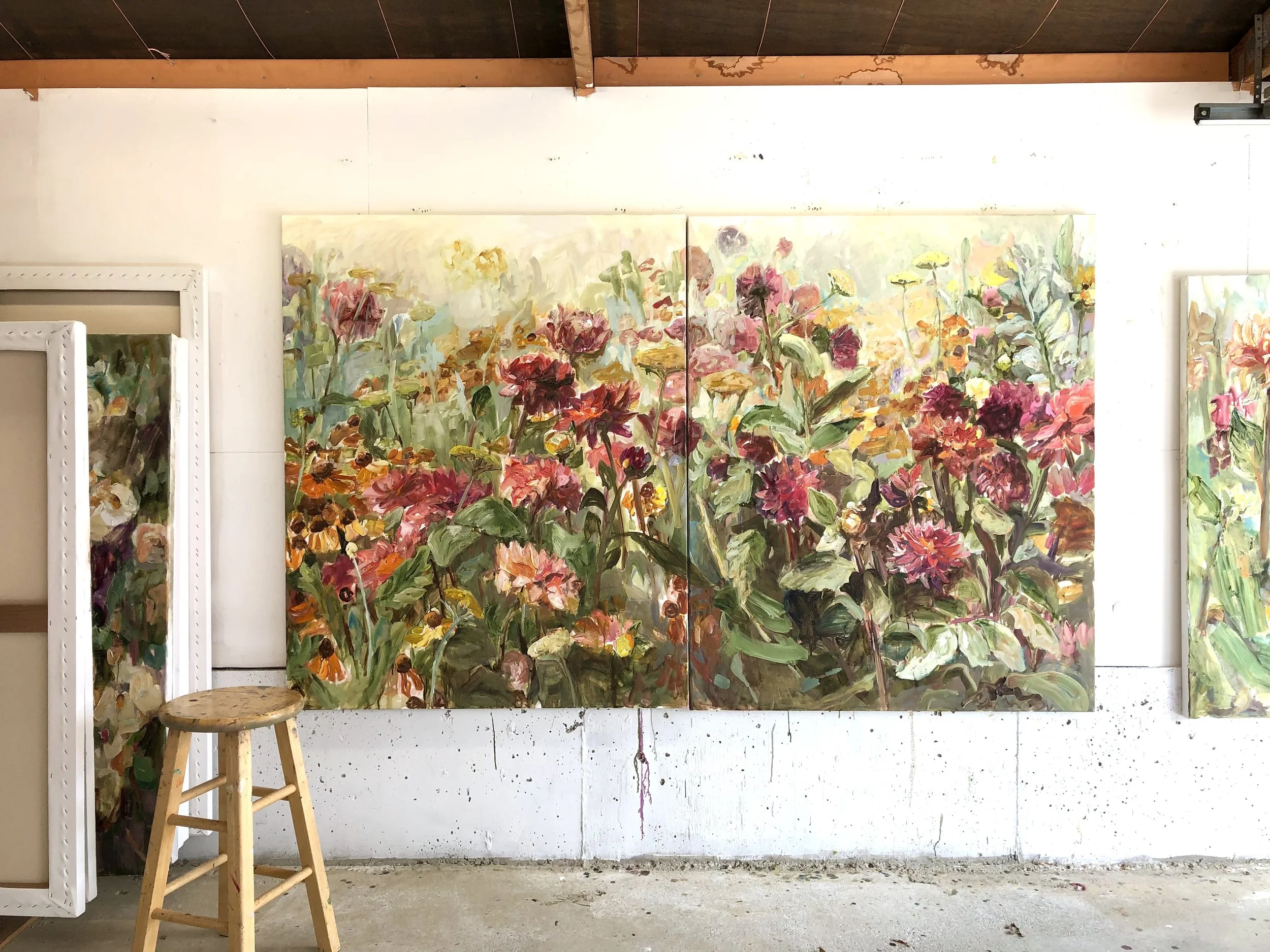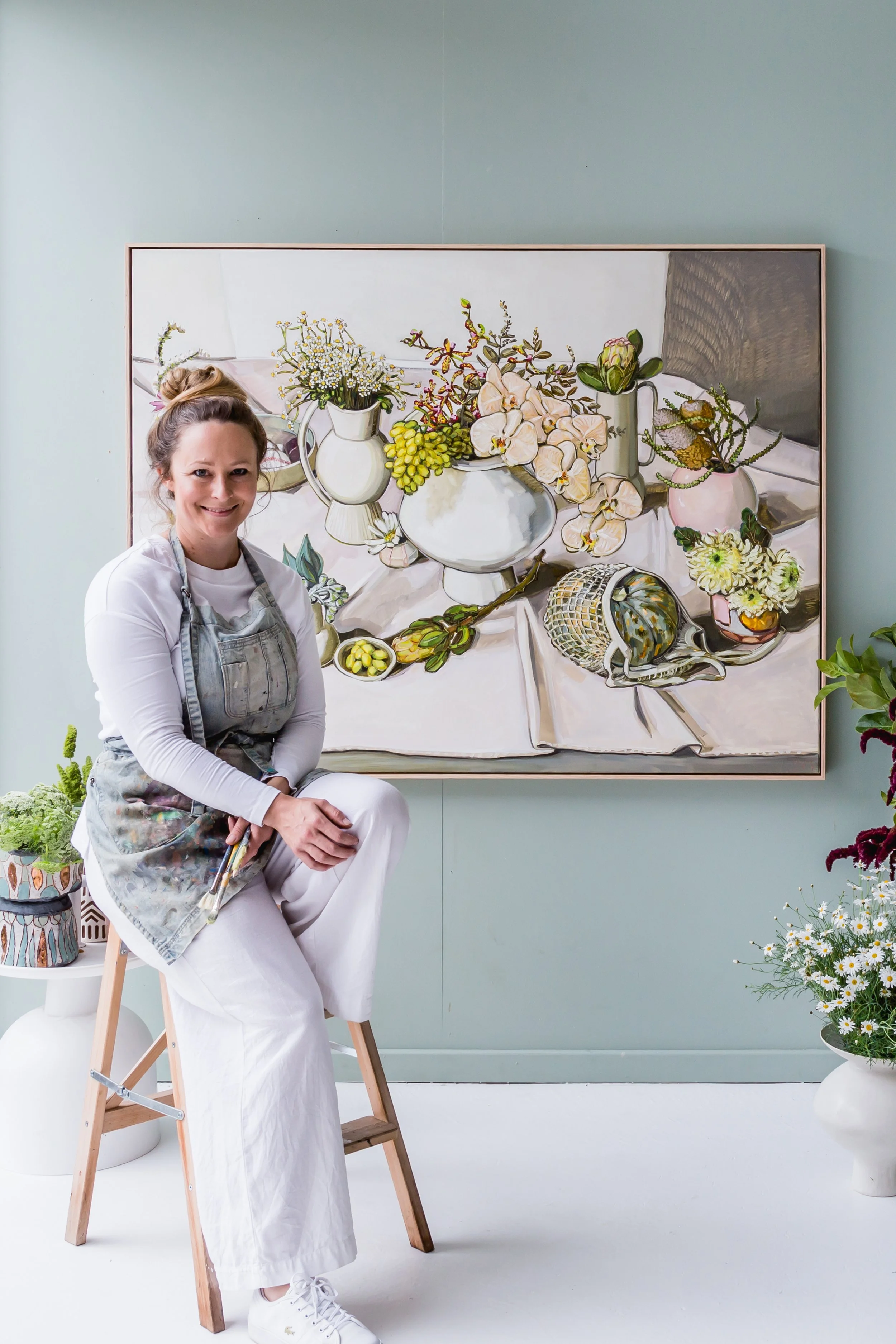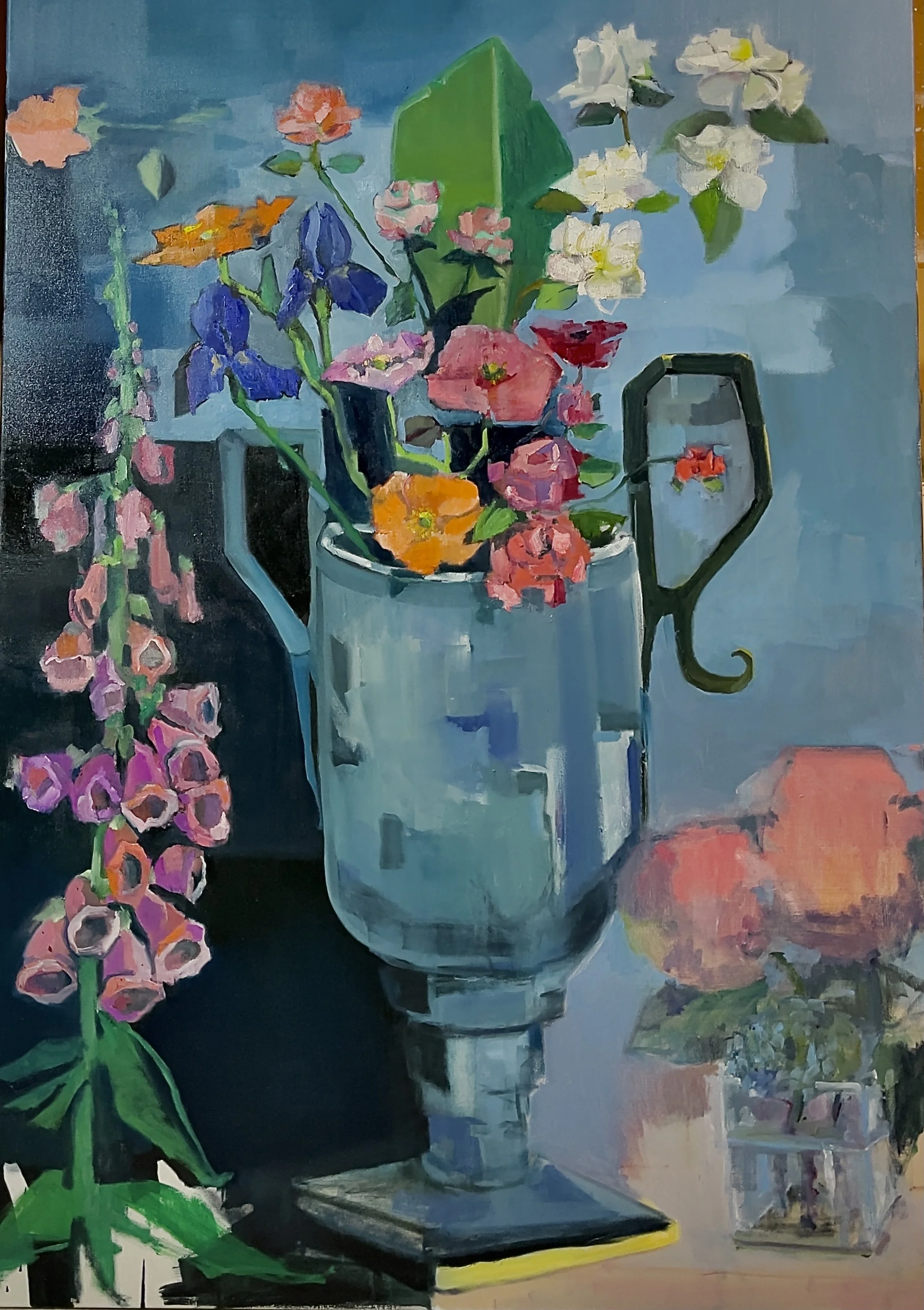Artists inspired by the garden
/I’ve always been fascinated and consumed by both art and the creative processes formed by artists.
As a gardener and artist myself, I have experienced the very literal inspiration provided by my garden to form the basis of my art practice. Attempting to capture the positive spirit and whimsy of gardening and arranging homegrown flowers, I have arrived at the creation of mixed media artworks that, for me, translate the magic I’ve found in my little plot.
A recent artwork of mine called ‘Lolly Scramble’, involving foraged lupins, peonies from my cousins The Peony People and homegrown additions.
From ancient times, garden scenes and flowers have been depicted in art, often loaded with symbolism speaking of society and themes of life and loss, as well as comfort and hope.
It was with interest that I started thinking about the motivation and inspiration lying behind the work of some of my favourite New Zealand artists who, with their different methods and mediums, play with the notion of gardens and recognisable forms of flowers.
I discovered that, of the five artists I reached out to, only three of them actively gardened themselves.
Artist Fleur Woods
Upper Moutere-based embroidery artist Fleur Woods talked with warmth about her garden’s ability to both whisk her away from the pressures of life and provide her with live specimens for observation and inspiration.
Her richly layered and bright artworks appear painted with thread, evoking memories of floral moments we might all remember.
“For me, gardens are living artworks and the ultimate inspiration. The details represented in flora, nature's resilience and the humbling of our ability to control the course of things, can all be found in the garden.
“To have that at my fingertips every day allows me to notice more of those details and find more creative ways to capture their essence and share that with others through my art.”
Artist Katherine Throne
Wānaka-based Katherine Throne’s deliciously textured paintings pull the viewer into softly lit corners of frothy rose gardens and rambling borders.
Her use of gardens as her subject is a natural extension of a lifelong interest, her studies in permaculture and sustainability, and time spent observing the community helpers at Auckland’s Kelmarna Gardens.
“The untamed garden strikes me as a community of individuals allowed to be themselves, expressing and celebrating their individuality while supporting those around them. I loved this idea and thought how wonderful it would be if we lived in a similar manner – no norms, no expectations, just the freedom to be our best selves with support from those around us,” shared Throne.
“While being in gardens is grounding, and painting them is incredibly uplifting, ultimately my work is about celebrating the power and uniqueness of being ourselves.”
Australian based, New Zealand artist Sam Michelle
Photo credit: Suzi Appel
Melbourne-based New Zealand painter Sam Michelle has built a huge following for her oil-based, still-life paintings, mostly depicting gentle domestic scenes.
While flowers have often featured within these paintings, it’s her new passion for gardening that has seen a shift in her work.
In just her second year of growing, she has found her garden provides her with looser, homegrown subject matter as well as a valued connection with other gardeners – something that boosts her wellbeing as a full-time artist, working from home.
“The fleeting beauty of flowers inspires me to race and catch the feeling they give onto my canvas. I love to paint my blooms as characters, so I ensure I have a mixture of fun, moody and romantic flowers in my garden.
“I love my morning garden wander to see what’s about to flower, which gets me excited with ideas. Visiting a florist is this wonderful feeling on steroids!”
Artist Carmel Van Der Hoeven
For Waikato-based artist Carmel Van Der Hoeven, gardening hasn’t captured her interest as an activity, but it does provide great inspiration and a base to her art practice.
Her highly recognisable paintings feel like “cropped” moments from wild and rambling floral spaces.
“I dabble, but have never found a natural affinity towards growing, to be honest. What I do find through flowers, nature and art is a connection to life, death and movement. It helps me see purpose in the chaos,” shares Van Der Hoeven.
“Gardens offer me a subject matter which I can use and manipulate every available colour, creating something the viewer recognises as ‘gardenish’, but at the same time, that use of colour and brush mark can also present questions to the viewer. The meanings and interpretations can be endless.”
Artist John Lancashire
Hawke’s Bay painter John Lancashire finds the freedom in flowers a universal language.
While his connection to gardens and flora is purely from an observer’s perspective, he admits this botanical focus is an obsession that has crept up and taken him by surprise.
Flowers offer Lancashire an excuse to paint with colour, providing a way to express emotion or story through his work.
“It is not just the flowers, it is also the vessels, air, water and the way they are put together,” shares Lancashire.
“Each flower type presents an imagined narrative for the artist, too, with roses having a superior air of authority and dandelions being a favourite but overlooked or even scorned member of the garden, representing a kind of resilience.”
Learning what underpins the work of these botanical artists just enriches their resulting work for me. It also, unexpectedly, reveals that the words and feelings they use to describe their art and practice matches many of those I have heard from people when describing their connection to gardening.
Whether a person’s gardens are found in the ground or on the wall, perhaps the same feelings of enrichment, creativity, life, death and comfort are available to us all, spade in hand or not.
This is an expanded version of the article featured in my Stuff ‘Homed’ gardening column for beginners , The Press, Dominion Post and other regional papers on October 28h 2021
All words and images are my own, taken in my home and garden in Christchurch, New Zealand unless otherwise captioned.
